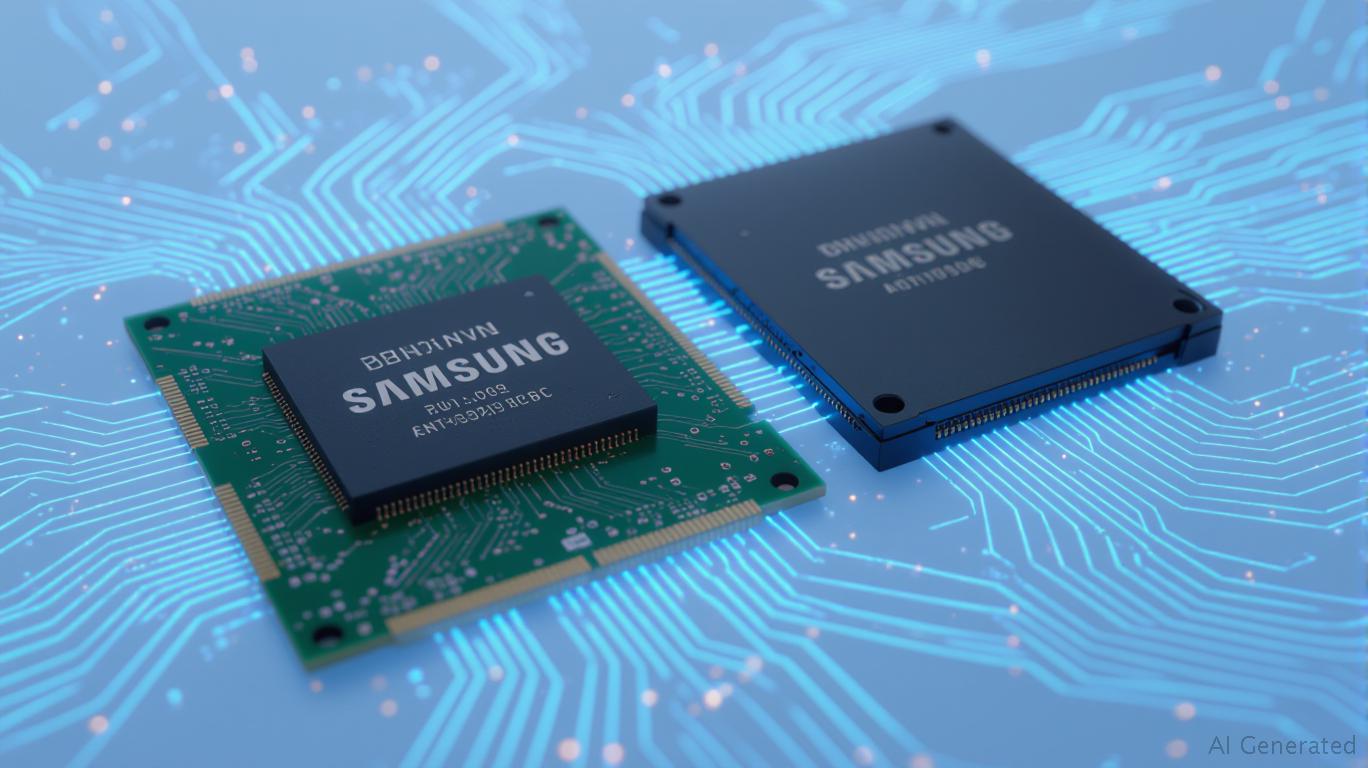ECARX Holdings and Samsung: A Blueprint for AI-Driven Dominance in Mobility and Robotics
The automotive industry's evolution into a hub of AI-driven innovation is no longer theoretical—it's operational.
Holdings' strategic with Samsung, announced on July 11, 2025, marks a pivotal step in this transformation, positioning the company to dominate not just automotive intelligence but adjacent markets like robotics and smart devices. This partnership is far more than a supplier deal; it's a blueprint for cross-sector scalability, margin expansion, and a redefined addressable market. Here's why investors should take notice.The Strategic Alliance: A Foundation for Ecosystem Dominance
ECARX and Samsung's collaboration is designed to bridge hardware and software ecosystems, leveraging Samsung's prowess in components like next-generation displays, automotive-grade LPDDR5 memory, and flash storage to supercharge ECARX's AI and robotics solutions. The partnership's immediate focus on ECARX's Antora® computing platform and Skyland® intelligent driving solution—already embedded in millions of vehicles—demonstrates the synergy's practicality. By integrating Samsung's high-speed memory, ECARX reduces latency and enhances computational power, critical for real-time decision-making in autonomous systems.

Beyond vehicles, the alliance expands ECARX's reach into wearables, smartphones, and robotics. For instance, ECARX's lidar technology, now being adapted for robotic lawn mowers, exemplifies how the partnership's modular hardware stack enables rapid prototyping and mass production. This cross-sector agility isn't just theoretical: ECARX's software revenue surged by 148% year-over-year, a clear indicator of its expanding value proposition.
Cross-Sector Scalability and the AI/Robotics Frontier
The partnership's true value lies in its ability to compress time-to-market and lower R&D costs. By tapping into Samsung's existing supply chain and IP, ECARX avoids the pitfalls of reinventing the wheel. For example, the industry-first integration of LPDDR5 memory into Antora®—a joint achievement—demonstrates how shared expertise accelerates innovation. This model isn't limited to automotive:
- Robotics: ECARX's lidar integration into consumer robots (targeting 2026 production) could capitalize on a market projected to hit $200B by 2030.
- Smart Devices: Samsung's display tech in ECARX's cockpit systems already serves as a template for embedding automotive-grade components into home or industrial robotics.
The result? A $400B+ total addressable market across automotive, robotics, and smart terminals—far beyond ECARX's current footprint.
Revenue Diversification: From Cars to Connected Worlds
ECARX's financials reveal both challenges and opportunities. While its balance sheet faces headwinds (negative equity, high leverage), its software segment's meteoric growth and improved adjusted EBITDA signal a turning point. By diversifying revenue streams—148% YoY software growth—ECARX is shifting from a hardware-dependent model to a high-margin software-as-a-service (SaaS) play. This shift matters: SaaS margins typically exceed 70%, versus 20-30% for hardware.
The partnership's robotics and AI applications further amplify this trend. For instance, ECARX's ECARXperience HMI system, designed for adaptive in-vehicle interfaces, can be repurposed for smart home devices or industrial robots. Such cross-pollination isn't just cost-efficient; it creates a flywheel effect, where each new market fuels innovation in others.
Navigating Financial Crosscurrents
Critics will point to ECARX's operating losses (RMB24.6 million in Q1 2025) and supply chain risks (e.g., U.S. tariffs). Yet these are short-term hurdles. The company's global footprint—12 locations, 8.7 million vehicles—provides scale to weather volatility. Meanwhile, partnerships like this one reduce dependency on any single market or technology.
The real risk? Underestimating ECARX's strategic vision. By aligning with Samsung, ECARX isn't just selling components—it's building an open technology ecosystem that third-party developers and OEMs can plug into. This network effect could create a defensible moat in AI-driven mobility.
Investment Thesis: A Catalyst for Long-Term Growth
ECARX's stock currently trades at $3.20, below analysts' average target of $3.78. This gap reflects underappreciation of the Samsung partnership's potential. Here's why investors should act now:
- Undervalued Innovation: The alliance's $200B+ robotics market opportunity isn't priced into the stock.
- Margin Expansion: Software's rising contribution and cost synergies with Samsung could boost margins from 20% to over 40% by 2027.
- Strategic Differentiation: Few rivals combine ECARX's automotive scale with AI/robotics ambition.
Conclusion: A Buy on a Long-Term Play
ECARX Holdings isn't just another automotive tech player—it's a future-facing ecosystem builder. Its alliance with Samsung isn't just about hardware; it's about redefining what's possible in AI-driven mobility. With a target price of $3.78 and upside potential tied to robotics adoption, this is a stock primed to reward investors who look beyond today's balance sheet. For those willing to bet on the next decade of AI and automation, ECARX is a compelling buy.
Sign up for free to continue reading
By continuing, I agree to the
Market Data Terms of Service and Privacy Statement

Comments
No comments yet